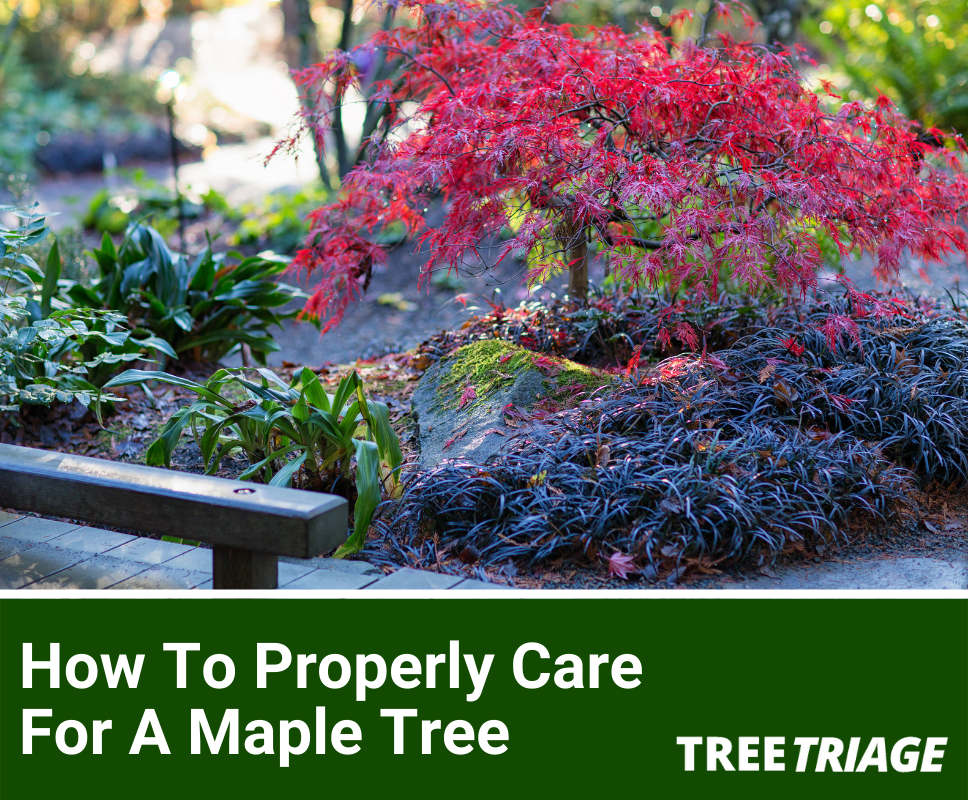In the realm of nature’s masterpieces, the maple tree stands tall, a testament to grace and resilience. With its vibrant foliage that transforms into a fiery tapestry in autumn and its sweet sap that yields the golden liquid we know as maple syrup, this tree embodies a synergy of beauty and sustenance. As a dedicated steward of these arboreal wonders, we present you with this comprehensive guide to the care and cultivation of maple trees.

Image: treetriage.com
The genus Acer, home to the maple tree, boasts over 120 species, each with its own distinctive characteristics. From the stately sugar maple to the ornamental Japanese maple, maple trees grace landscapes worldwide, adding a touch of elegance to our surroundings. However, ensuring their well-being requires a keen understanding of their specific needs.
Unveiling the Secrets of Maple Tree Care
Maple trees, while gracing many landscapes, demand careful attention to thrive. Neglecting their needs can result in stunted growth, diminished vigor, and increased susceptibility to pests and diseases. Let’s delve into the essential elements of maple tree care:
1. Choosing the Right Location:
Maple trees thrive in diverse settings, but strategic placement ensures optimal growth and well-being. Select a location with ample sunlight, as most maple species require at least six hours of direct sunlight daily. They prefer well-drained soil that is rich in organic matter. Avoid excessively wet or dry soil, as both extremes can hinder root development.
2. Nurturing the Soil:
Maple trees delight in nutrient-rich, well-aerated soil that retains moisture without becoming waterlogged. Enriching the soil with organic matter such as compost or manure provides a slow-release source of nutrients. Regular mulching around the base of the tree helps retain moisture, regulates soil temperature, and suppresses weeds.

Image: www.pinterest.com.mx
3. Watering Wisely:
Maple trees, like most plants, require consistent hydration, especially during the hot summer months. Regular watering encourages deep root growth and helps the tree withstand drought conditions. Avoid overwatering, as excessive moisture can lead to root rot and other problems. Allow the soil to dry out slightly between waterings.
4. Fertilizing for Vitality:
Fertilization provides maple trees with a vital boost of nutrients. Use a balanced fertilizer formulated for trees in early spring and again in late fall. Avoid over-fertilizing, as excessive nutrients can harm the tree’s roots and make it more susceptible to pests and diseases.
5. Protecting Against Pests and Diseases:
Maple trees can fall prey to various pests and diseases, including aphids, scale insects, and powdery mildew. Regular inspection and early intervention are crucial to prevent infestations and maintain the tree’s health. Use organic pest control methods whenever possible to minimize harm to the environment.
6. Pruning for Beauty and Health:
Pruning is an essential aspect of maple tree care, promoting healthy growth and controlling size. Remove dead or diseased branches promptly. Train young trees by removing any branches that cross or rub against each other. Regular pruning helps maintain the tree’s shape and reduces the risk of storm damage.
Enriching Lives with Maples: Beyond Care
Maple trees not only beautify our surroundings but also provide a myriad of benefits that enhance our lives:
1. Environmental Protectors:
Maple trees play a vital role in the environment. They absorb carbon dioxide and release oxygen, purifying the air we breathe. Their dense canopies create shade, reducing the urban heat island effect and providing shelter for wildlife.
2. A Source of Sweetness:
Maple trees are renowned for their sweet sap, which is transformed into the golden liquid we know as maple syrup. This natural sweetener is a delectable addition to pancakes, waffles, and countless other culinary creations.
3. Medicinal Values:
Traditional herbalists have long utilized maple tree bark for its medicinal properties. It contains salicylic acid, a compound known for its anti-inflammatory and pain-relieving effects.
4. Artistic Inspiration:
Maple trees have been a source of artistic and literary inspiration for centuries. Their vibrant foliage and graceful shapes have captivated painters, poets, and musicians, inspiring countless works of art.
How To Care For A Maple Tree
Conclusion: A Legacy of Maple Magic
Caring for maple trees is a labor of love that yields a lifetime of beauty and benefits. By following the guidance outlined in this article, you can ensure the health and well-being of these majestic giants. Whether gracing a backyard or lining a city street, maple trees enrich our lives in countless ways, a testament to the harmonious interplay between nature and human care. As we nurture these arboreal treasures, let us appreciate their enduring grace and strive to create a future where these magnificent trees continue to thrive and inspire generations to come.